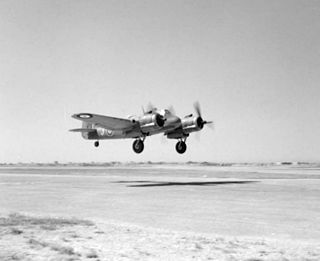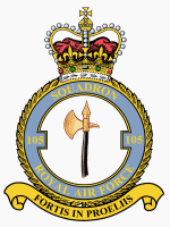No. 635 Squadron RAF was a heavy bomber squadron of the Royal Air Force during the Second World War.
No. 695 Squadron RAF was an anti-aircraft co-operation squadron of the Royal Air Force from 1943 to 1949.
No. 691 Squadron RAF was an Anti-aircraft cooperation squadron of the Royal Air Force from 1943 to 1949.
No. 679 Squadron RAF was an anti-aircraft co-operation squadron of the Royal Air Force during the Second World War.

No. 151 Squadron was a squadron of the Royal Air Force.
No. 631 Squadron RAF was an anti-aircraft co-operation squadron of the Royal Air Force from 1943 to 1949.
No. 650 Squadron RAF was an anti aircraft co-operation squadron of the Royal Air Force during the Second World War.
No. 598 Squadron RAF was an Anti-aircraft Co-operation squadron of the Royal Air Force during the Second World War.
No. 587 Squadron RAF was an anti-aircraft co-operation squadron of the Royal Air Force from 1943 to 1946.
No. 48 Squadron was a Royal Air Force squadron that saw service in both the First and Second World Wars.

No. 235 Squadron RAF was an anti-submarine warfare squadron of the Royal Air Force which disbanded during July 1945. It was active in both the First World War, forming during August 1918 and disbanding in February 1919, and in the Second World War, reforming at the end of October 1939, and served as a squadron in RAF Coastal Command.

No. 105 Squadron was a flying squadron of the Royal Air Force, active for three periods between 1917 and 1969. It was originally established during the First World War as a squadron of the Royal Flying Corps and disbanded after the war. Reactivated shortly before the Second World War, it was inactive again after the conflict. During its second existence it was a bomber unit and had the distinction to be the first to operate the de Havilland Mosquito light bomber. During the 1960s it was reactivated again for six years to provide transport support for the British Army in the Aden Protectorate and the Far East.
Number 58 Squadron was a squadron of the Royal Air Force.
No. 116 Squadron RAF was a Royal Air Force squadron first formed as part of the Royal Flying Corps during the First World War. Reformed as part of the RAF during the Second World War it served as an anti-aircraft calibration unit and also operated post-war from 1952 until 1958.

No. 270 Squadron RAF was a Royal Air Force squadron which disbanded at the end of June 1945. It operated both in the First and Second World War, mainly as an anti-shipping and anti-submarine squadron. It initially formed during October 1918 lasting around eleven months and disbanded in September 1919, merging into No. 269 Sqn. It reformed in November 1942.
No. 287 Squadron was an anti-aircraft co-operation squadron of the Royal Air Force from 1941 to 1946.
No. 179 Squadron RAF was a Royal Air Force Squadron that was a maritime patrol/anti-submarine warfare unit in World War II.
No. 290 Squadron RAF was a Royal Air Force Squadron formed as an anti-aircraft cooperation unit in World War II.
No. 291 Squadron RAF was a Royal Air Force squadron formed as an anti-aircraft cooperation unit in World War II.
No. 288 Squadron RAF was a Royal Air Force Squadron formed as an anti-aircraft co-operation unit in World War II.



